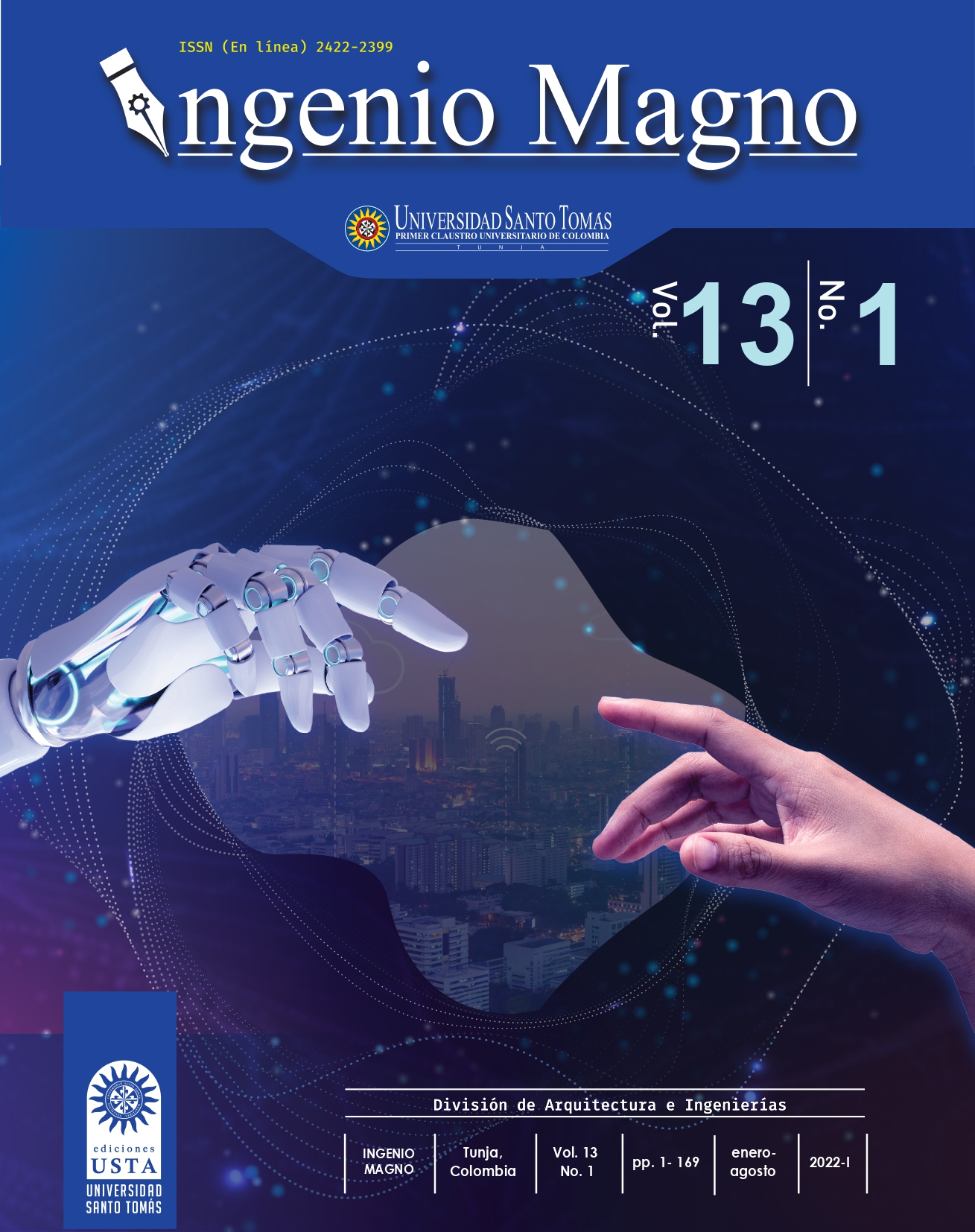Implementation of a Device to Measure Air Quality in Tunja-Boyacá
Main Article Content
Abstract
Downloads
Article Details
DECLARATION OF ORGINIALITY OF SUBMITTED ARTICLE
With this document, I/We certify that the article submitted for possible publication in the institutional journal INGENIO MAGNO of the Research Center Alberto Magno CIIAM of the University Santo Tomás, Tunja campus, is entirely of my(our) own writing, and is a product of my(our) direct intellectual contribution to knowledge.
All data and references to completed publications are duly identified with their respective bibliographical entries and in the citations thus highlighted. If any adjustment or correction is needed, I(we) will contact the journal authorities in advance.
Due to that stated above, I(we) declare that the entirety of the submitted material is in accordance with applicable laws regarding intellectual and industrial property, and therefore, I(we) hold myself(ourselves) responsible for any complaint related to it.
If the submitted article is published, I(we) declare that I(we) fully relinquish publishing rights of the article to the University Santo Tomás, Tunja campus. As remuneration for this relinquishment of rights, I(we) declare my(our) agreement to receive two (2) copies of the edition of the journal in which my(our) article appears.
References
[2] El caso específico del ozono como fuente de contaminación. (n.d.). Retrieved March 23, 2021, from https:// www.upo.es/depa/webdex/quimfis/ trab_alumnos/sevilla/sevilla.htm
[3] Guzmán Ruiz, L. A., & Buitrago Sierra, M. L. (2013). Formulación del sistema de vigilancia de la calidad del aire para el corredor industrial Paipa, Duitama y Sogamoso a partir de la red de vigilancia y calidad del aire del Valle de Sogamoso. In CORPOBOYACÁ (1998). Estudio de análisis de costo/beneficio del cambio de chircales ycaleras para el mejoramiento de calidad de aire en el Valle de Sogamoso. Tunja:Ecopetrol, UPTC. http://repository.unilibre.edu.co/ handle/10901/11319
[4] La Raspberry Pi 4 con 8 GB de RAM sube el nivel del proyecto. (n.d.). Retrieved April 10, 2021, from https:// www.muycomputer.com/2020/05/28/ Raspberry-pi-4-8-gb-ram/
[5] Martí Valls, J. (2017). Efectos de la calidad del aire sobre la salud. FMC Formacion Médica Continuada En Atencion Primaria, 24(9), 511– 514. https://doi.org/10.1016/j. fmc.2017.03.004
[6] math — Funciones matemáticas — documentación de Python - 3.10.4. (n.d.). Retrieved May 9, 2022, from https://docs.python.org/es/3/library/ math.html
[7] OMS/OPS. (2011). Vigilancia en Salud Pública. Módulo de Principios de Epidemiología Para El Control de Enfermedades (MOPECE), 4(Control de enfermedades), 54.
[8] Reporte mensual de calidad del aire CORPOBOYACA Agosto de 2020 IP- 2020-08 1.Introducción. (n.d.).
[9] Resumen de Salud Pública: Amoníaco (Ammonia) | PHS | ATSDR. (n.d.). Retrieved March 22, 2021, from https:// www.atsdr.cdc.gov/es/phs/es_phs126. html#bookmark3

